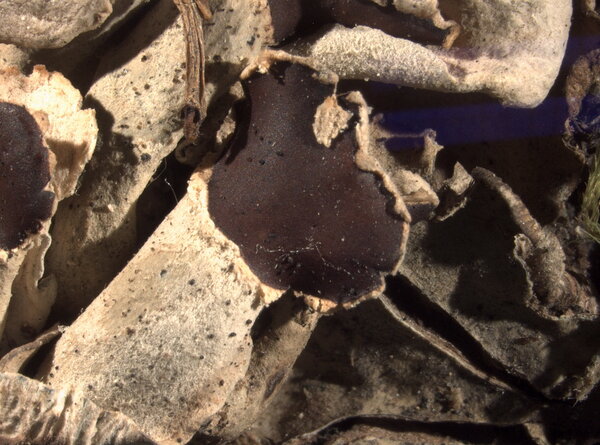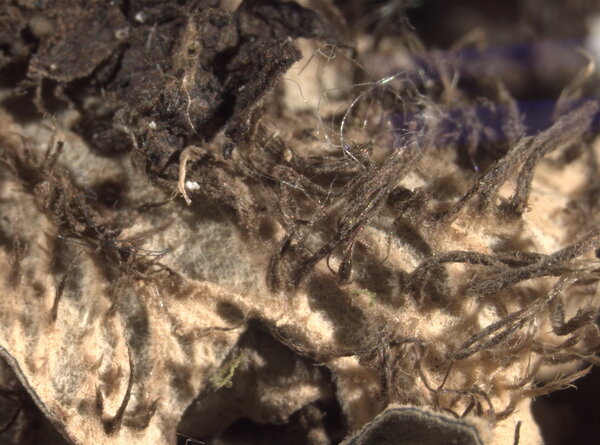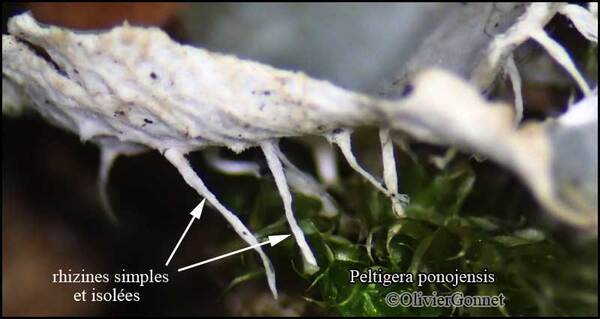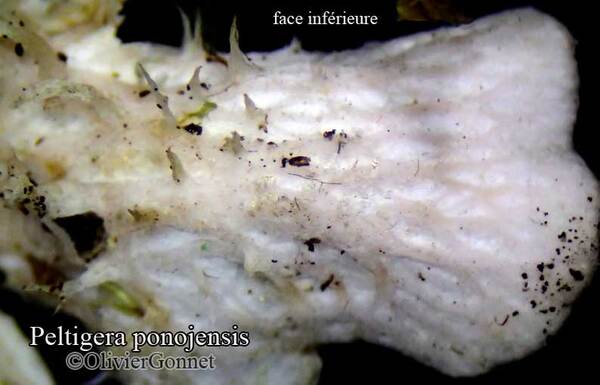Peltigera ponojensis Gyeln.
Mem. Soc. Fauna Fl. Fenn., 7: 143, 1931.
Synonyms: Peltigera plittii Gyeln.; Peltigera plittii var. macrolobata Gyeln.
Distribution: N - Frl (Vitikainen 1994, Tretiach & Molaro 2007), Ven (Vitikainen 1994), TAA (Vitikainen 1994), Lomb (Gheza 2019, 2019b), Piem (Vitikainen 1994, Isocrono & al. 2003b), VA (Valcuvia 2000, Piervittori & al. 2004), Lig (Ravera & al. 2019a). C - Tosc (Benesperi 2007), Laz (Vitikainen 1994), Abr (Vallese & al. 2022), Mol (Nimis & Tretiach 2004, Caporale & al. 2008).
Description: Thallus foliose, broad-lobed, heteromerous and dorsiventral, loosely attached, forming 8-10(-15) cm wide rosettes. Lobes flattened, contiguous, with rounded ends, up to 1 cm broad, 5-6 cm long, with up-turned, flexuose margins, the upper surface smooth, densely arachnoid-tomentose in marginal parts, often glabrescent in central parts, whitish grey when dry (often more brownish and glossy in central parts), turning blackish green when wet. Lower surface whitish, with raised, pale, 0.5-1 mm broad veins, white lenticular interstices, and 3-7(-12) mm long, pale, simple or sparingly branched rhizines. Upper cortex pseudoparenchymatous; medulla white; lower cortex absent. Apothecia frequent, at first circular and flat, finally often saddle-shaped, terminal on short lobes, dark brown but sometimes finally blackening, to 10(-15) mm long. Paraphyses simple, distinctly thickened above. Asci 8-spored, fissitunicate, the thickened apex with a K/I+ blue ring, Peltigera-type. Ascospores 3(-5)-septate, hyaline, fusiform, thin-walled, (31-)45-65(-78) x 2.5-5 µm. Pycnidia brown in upper part, pale below, immersed, up to 0.6 mm in diam. Conidia bacilliform or slightly bifusiform, simple, 4-6 x c. 1 µm. Photobiont cyanobacterial (Nostoc, the cells not in long chains). Spot tests: cortex and medulla K-, C-, KC-, P-, UV-- Chemistry: without lichen substances.Note: on subneutral to slightly basic soil in grasslands and heaths, mostly in upland areas; often confused with P. rufescens in the past, this lichen is probably more widespread, also along the Apennines.
Growth form: Foliose, broad lobed
Substrata: soil, terricolous mosses, and plant debris
Photobiont: cyanobacteria, filamentous (e.g. Nostoc, Scytonema)
Reproductive strategy: mainly sexual
Commonnes-rarity: (info)
Alpine belt: very rare
Subalpine belt: rare
Oromediterranean belt: very rare
Montane belt: very rare
Submediterranean belt: absent
Padanian area: absent
Humid submediterranean belt: absent
Humid mediterranean belt: absent
Dry mediterranean belt: absent
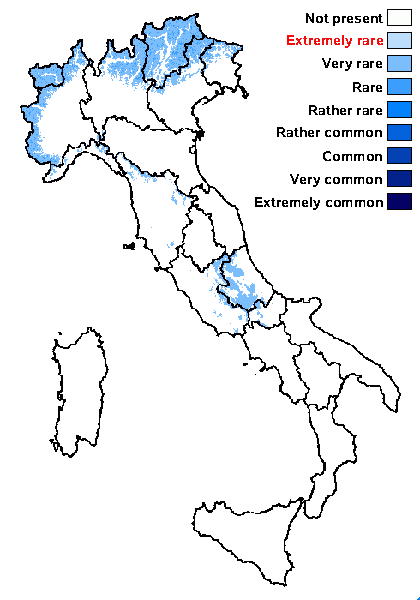
Predictive model
Herbarium samples
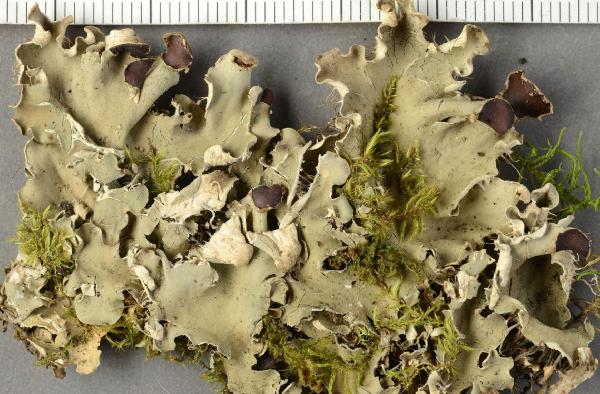
Source: Timdal, E. & Gjerlaug, H. C. 2023. DNA barcodes reveal unrecognized species diversity in Peltigera sect. Peltigera in Norway, including the new species P. jonii. Graphis Scripta 35 (4): 30–65. Oslo. ISSN 2002-4495 - CC BY-4.0
Norway, OLICH8224 (O L-46317). Ruler division = 1 mm
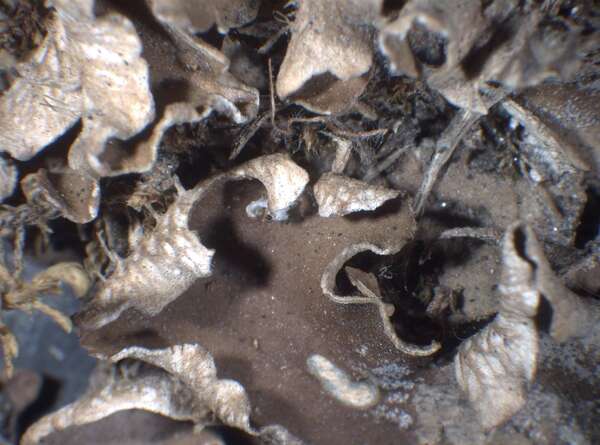

P.L. Nimis; Owner: Department of Life Sciences, University of Trieste
Herbarium: TSB (1258)
2003/03/03
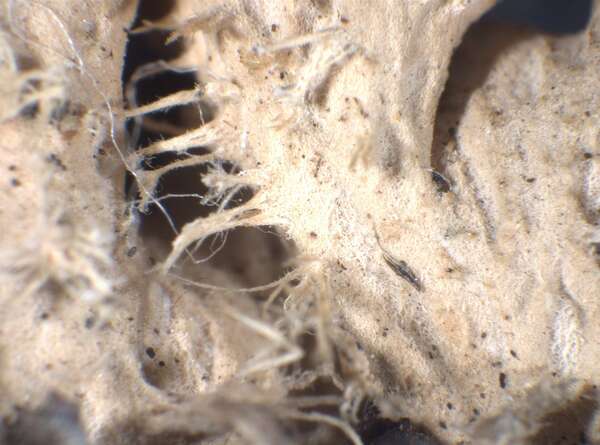

P.L. Nimis; Owner: Department of Life Sciences, University of Trieste
Herbarium: TSB (2815)
2003/03/03
lower surface with rhizines
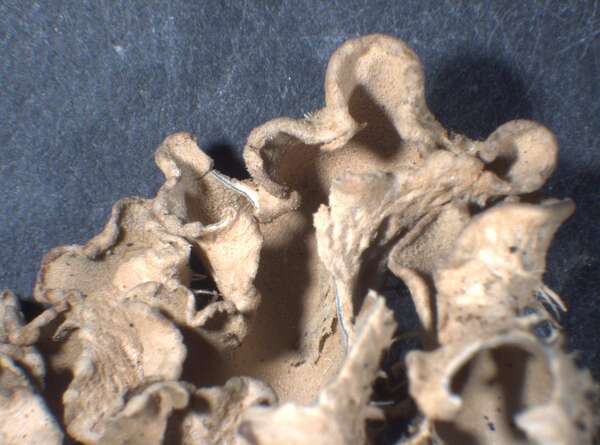

P.L. Nimis; Owner: Department of Life Sciences, University of Trieste
Herbarium: TSB (1258)
2003/03/03
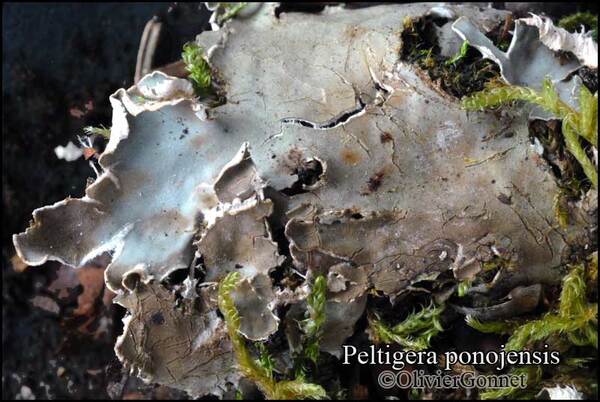
Courtesy Danièle et Olivier Gonnet - Source: https://www.afl-lichenologie.fr/Photos_AFL/Photos_AFL_P/Text_P_2/Peltigera_ponojensis.htm
France, 24/12/2014 - Lans en Vercors - Servagnet - Isère
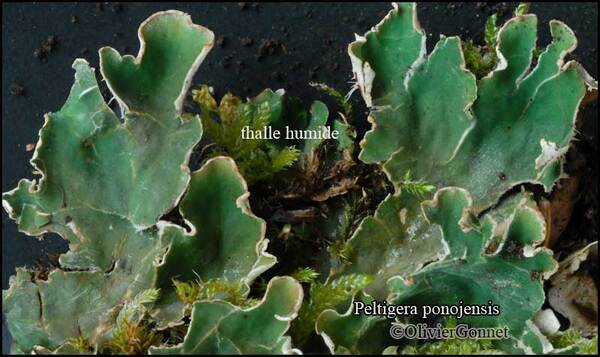
Courtesy Danièle et Olivier Gonnet - Source: https://www.afl-lichenologie.fr/Photos_AFL/Photos_AFL_P/Text_P_2/Peltigera_ponojensis.htm
France, 24/12/2014 - Lans en Vercors - Servagnet - Isère
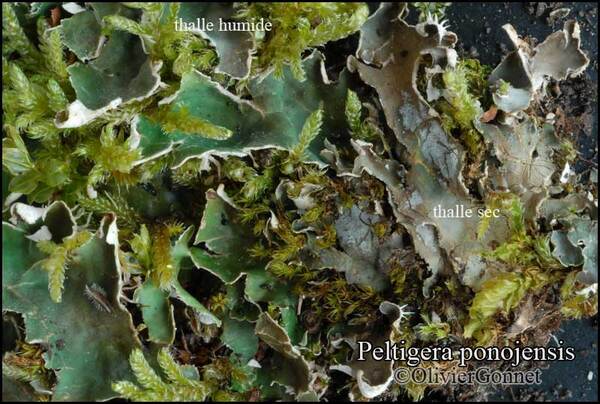
Courtesy Danièle et Olivier Gonnet - Source: https://www.afl-lichenologie.fr/Photos_AFL/Photos_AFL_P/Text_P_2/Peltigera_ponojensis.htm
France, 24/12/2014 - Lans en Vercors - Servagnet - Isère
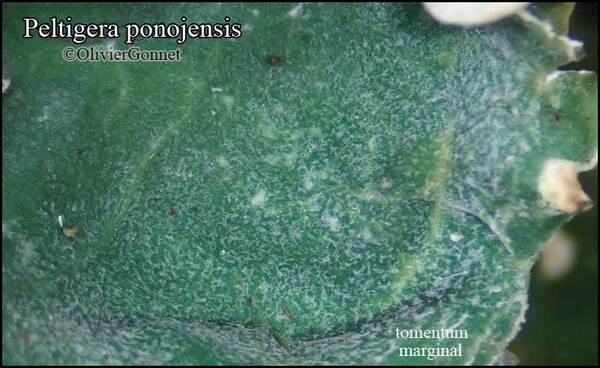
Courtesy Danièle et Olivier Gonnet - Source: https://www.afl-lichenologie.fr/Photos_AFL/Photos_AFL_P/Text_P_2/Peltigera_ponojensis.htm
France, 24/12/2014 - Lans en Vercors - Servagnet - Isère
Growth form: Foliose, broad lobed
Substrata: soil, terricolous mosses, and plant debris
Photobiont: cyanobacteria, filamentous (e.g. Nostoc, Scytonema)
Reproductive strategy: mainly sexual
Commonnes-rarity: (info)
Alpine belt: very rare
Subalpine belt: rare
Oromediterranean belt: very rare
Montane belt: very rare
Submediterranean belt: absent
Padanian area: absent
Humid submediterranean belt: absent
Humid mediterranean belt: absent
Dry mediterranean belt: absent

Predictive model
| Herbarium samples |

Source: Timdal, E. & Gjerlaug, H. C. 2023. DNA barcodes reveal unrecognized species diversity in Peltigera sect. Peltigera in Norway, including the new species P. jonii. Graphis Scripta 35 (4): 30–65. Oslo. ISSN 2002-4495 - CC BY-4.0
Norway, OLICH8224 (O L-46317). Ruler division = 1 mm


P.L. Nimis; Owner: Department of Life Sciences, University of Trieste
Herbarium: TSB (1258)
2003/03/03


P.L. Nimis; Owner: Department of Life Sciences, University of Trieste
Herbarium: TSB (2815)
2003/03/03
lower surface with rhizines


P.L. Nimis; Owner: Department of Life Sciences, University of Trieste
Herbarium: TSB (1258)
2003/03/03

Courtesy Danièle et Olivier Gonnet - Source: https://www.afl-lichenologie.fr/Photos_AFL/Photos_AFL_P/Text_P_2/Peltigera_ponojensis.htm
France, 24/12/2014 - Lans en Vercors - Servagnet - Isère

Courtesy Danièle et Olivier Gonnet - Source: https://www.afl-lichenologie.fr/Photos_AFL/Photos_AFL_P/Text_P_2/Peltigera_ponojensis.htm
France, 24/12/2014 - Lans en Vercors - Servagnet - Isère

Courtesy Danièle et Olivier Gonnet - Source: https://www.afl-lichenologie.fr/Photos_AFL/Photos_AFL_P/Text_P_2/Peltigera_ponojensis.htm
France, 24/12/2014 - Lans en Vercors - Servagnet - Isère

 INDEX FUNGORUM
INDEX FUNGORUM
 GBIF
GBIF
 DOLICHENS
DOLICHENS
